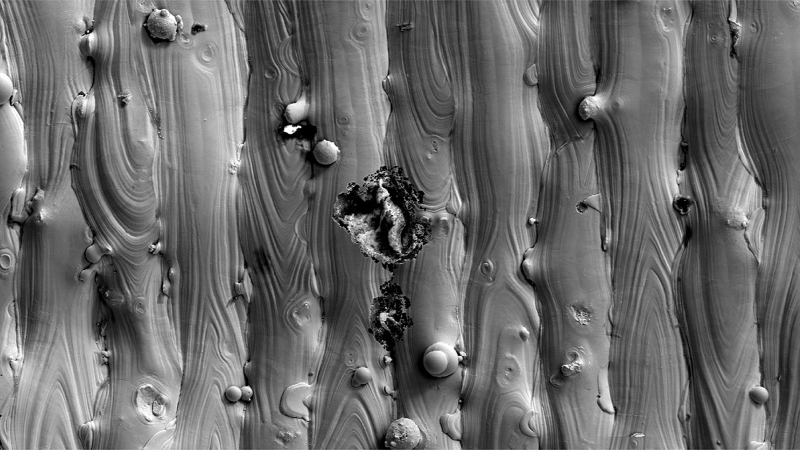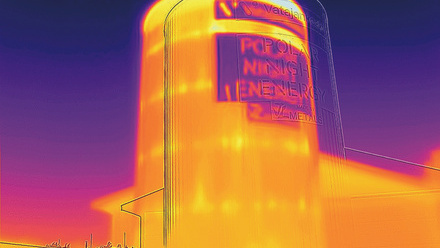Origins of corrosion in 3D-printed stainless steel
An American team claims to have uncovered the key players in 3D-printed steel corrosion.

A photo taken by a scanning electron microscope shows a pit at the surface of an additively manufactured (3D-printed) stainless steel part
© Image by Thomas VoisinThe Lawrence Livermore National Laboratory (LLNL) team discovered that pitting corrosion in 3D-printed stainless steel is caused by tiny particles called ‘slags,’ which are produced by deoxidisers such as manganese and silicon.
The team is exploring pitting corrosion in additively manufactured (3D-printed) stainless steel 316L in seawater.
Stainless steel 316L is a popular choice for marine applications, but even this resilient material is not immune to pitting corrosion.
In traditional stainless steel 316L manufacturing, manganese and silicon are typically added prior to casting to bind with oxygen and form a solid phase in the molten liquid metal that can be easily removed post-manufacturing.
Researchers have found these slags also form during laser powder bed fusion (LPBF), but remain at the metal's surface and initiate pitting corrosion.
The team used a combination of advanced techniques, including plasma-focused ion beam milling, transmission electron microscopy and X-ray photoelectron spectroscopy on AM stainless steel components.
They were reportedly able to zoom in on the slags and uncover their role in the corrosion process in a simulated ocean environment, finding they create discontinuities and allow the chloride-rich water to penetrate the steel and cause damage.
Additionally, the slags contain metal inclusions that dissolve when exposed to the seawater-like environment, further contributing to the corrosion process.
Researchers say the study marks a significant step forward in the ongoing battle against corrosion, not only deepening scientific understanding of corrosion processes, but also paving the way for developing improved materials and manufacturing techniques.
Members of the team say the next steps to enhancing the performance and longevity of 3D-printed stainless steel 316L would be to alter the formulation of the powder feedstock to remove manganese and silicon, to limit or eliminate slag formation.
Lead author and LLNL staff scientist, Shohini Sen-Britain, says, ‘Pitting corrosion is extremely difficult to understand due to its stochastic nature, but we determined the material characteristics that cause or initiate this type of corrosion.
‘We confirmed this by taking advantage of the impressive materials characterisation suite and modelling capabilities we have at LLNL, where we were able to prove without a doubt that slags were the cause.’







